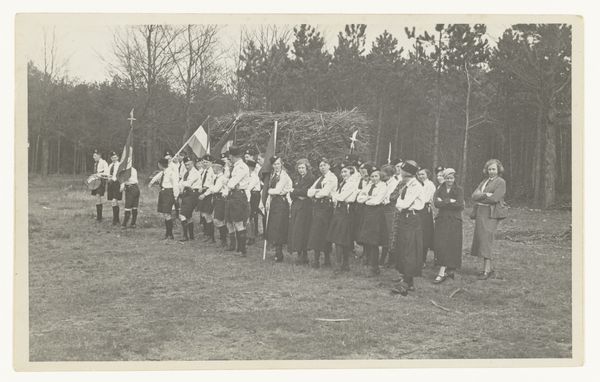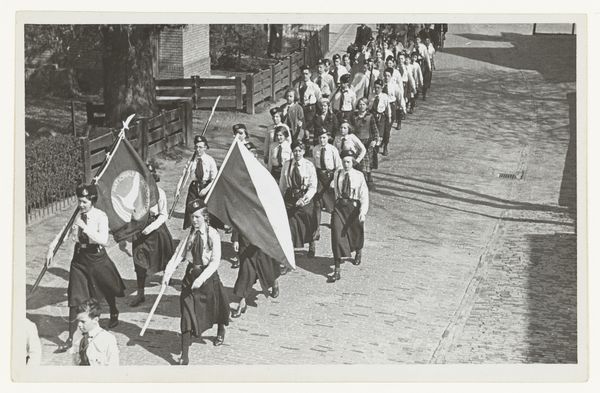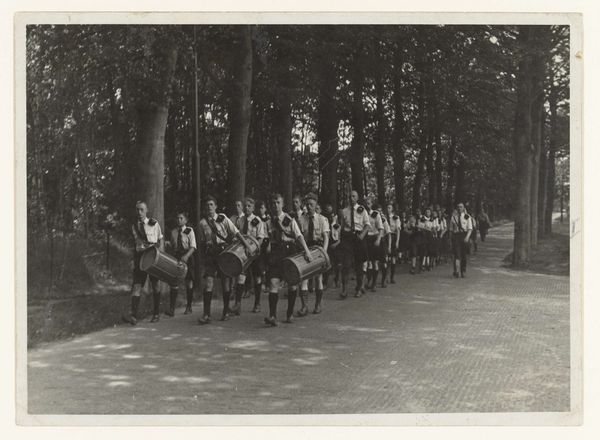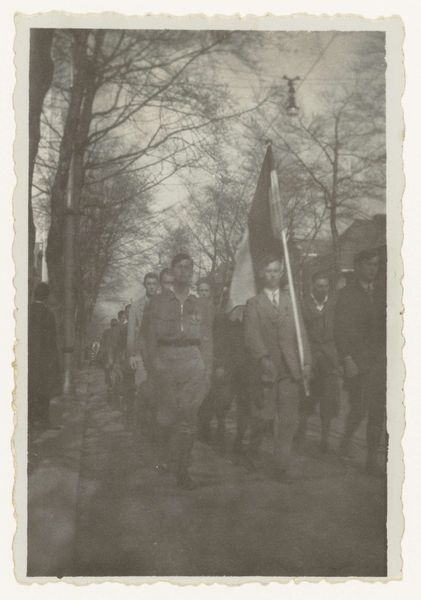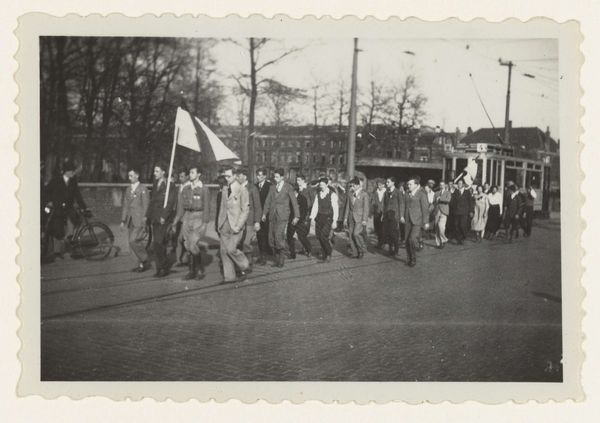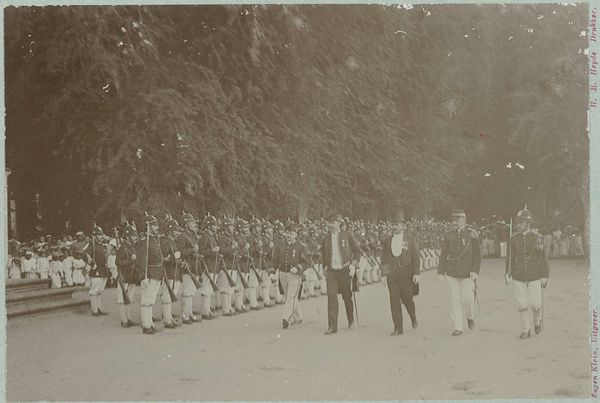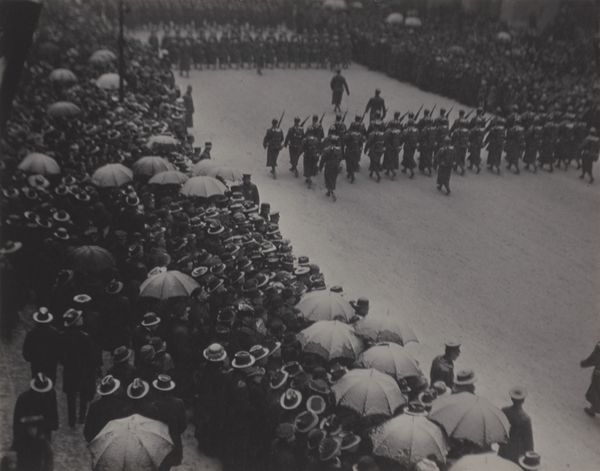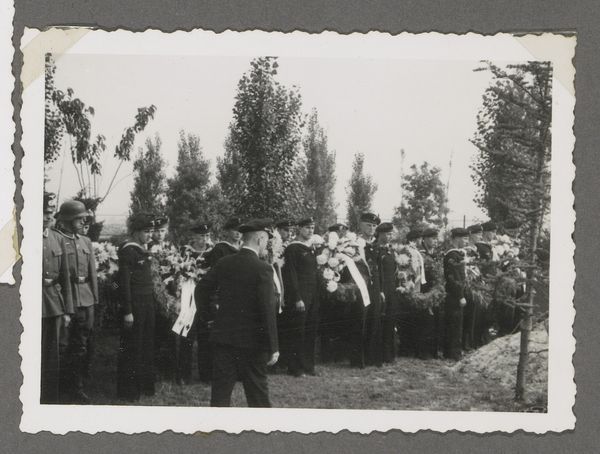
print, photography, gelatin-silver-print
#
portrait
#
print photography
# print
#
photography
#
group-portraits
#
gelatin-silver-print
#
history-painting
Dimensions: height 12 cm, width 18 cm
Copyright: Rijks Museum: Open Domain
Curator: This photograph, a gelatin-silver print from the Rijksmuseum collection, is titled "Opening sportterrein Esveha" by Polygoon, likely taken sometime between 1941 and 1947. What are your first thoughts? Editor: My first impression is… chilling. The stark contrast of the monochrome palette amplifies the rigidity of the scene, the sheer number of people feels overwhelming and impersonal, even for a large event. Curator: It certainly speaks to the calculated organization of the time. What symbolic elements stand out to you? Editor: Immediately, the swastika banner dominates, not only visually but symbolically. The cross, intended to symbolize healthcare, and a white circle evoke notions of health and order, but in the broader context, the white itself evokes a racialized concept of purity, doesn't it? It appears again and again: armband crosses and flags...it appears designed to amplify these loaded themes and feelings. Curator: Precisely. Considering the likely timeframe, during or shortly after World War II, this image functions as more than just a record of a sports field opening. The public display, the alignment of figures, are demonstrative. How does this photographic work intersect with our historical understanding? Editor: I find it to be a rather terrifying representation of institutional power and societal indoctrination. The mass of people, all facing the same direction, the uniformed individuals...It represents the dangerous allure of unity under an oppressive regime. These kinds of displays create not just a culture of adherence but instill a constant performative affirmation. Curator: Yes, the performance aspect is vital. Beyond documenting, images like this contributed to shaping a very specific visual narrative. It is worth considering the relationship between such orchestrated visuals and the broader machinery of propaganda. What enduring insights does a picture such as this leave with you? Editor: Ultimately, it serves as a stark reminder of the power of symbols, and how even seemingly benign symbols, can be twisted and exploited to enforce oppressive ideologies. Curator: For me, this photograph urges a persistent examination of the institutional structures that underpin such imagery and its enduring capacity to influence perception.
Comments
No comments
Be the first to comment and join the conversation on the ultimate creative platform.

